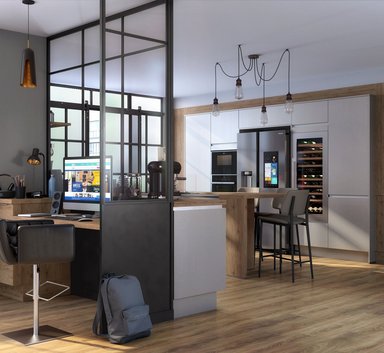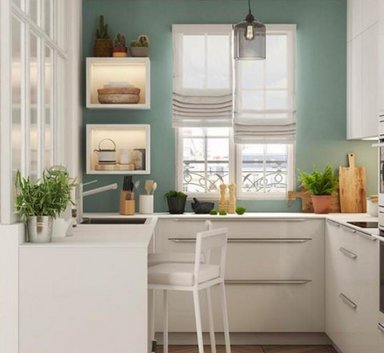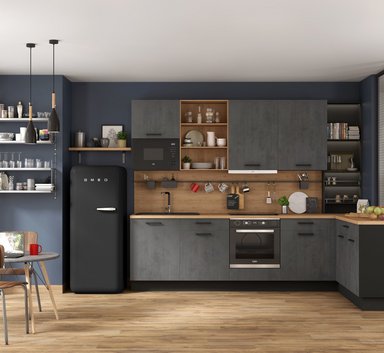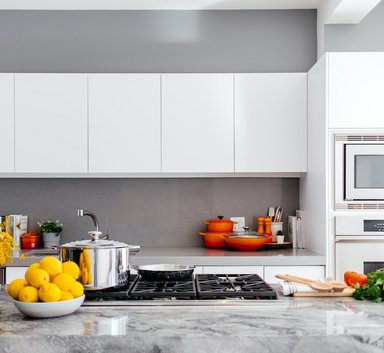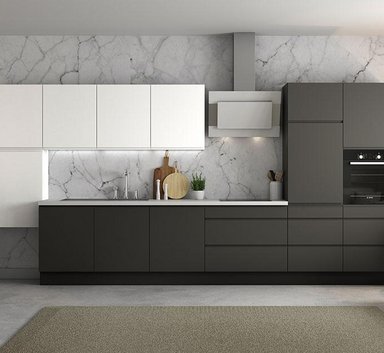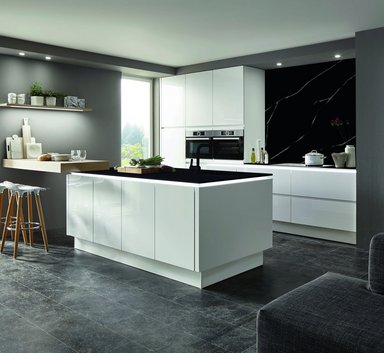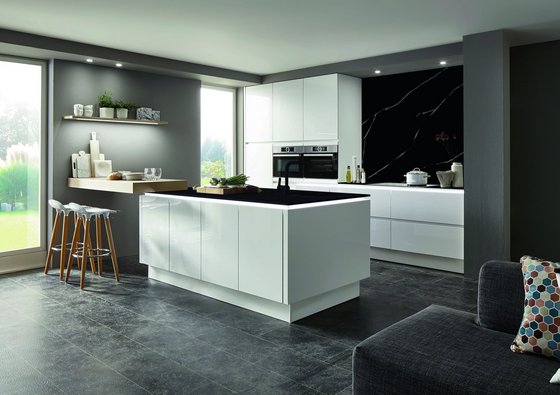
Who doesn’t want their own island?
Let’s address some misconceptions – it is completely possible to install an island in a small kitchen. Whether rectangular, square or a more unusual shape, its dimensions can adapt to the size of the room. Note that a standard small version measures 1m by 60cm and fits perfectly in a small space. There are various types of island and you can choose between:
- a semi-island (against a wall): which is suitable for small areas unable to accommodate a clearance of 90cm on all sides. Positioning it against the wall optimises space.
- a central island: this is the most popular option. A central island is positioned in the middle of the kitchen and needs a minimum clearance distance around it. It could be a simple block providing additional storage and a dining surface or be multifunctional, with a sink, hob or built-in oven. For this type of island, you will need a kitchen of at least 15m2.
![[Translate to English:] un triangle et la distance entre chaque point doit idéalement être de 90 cm. La cuisine en forme de U avec îlot central est celle qui permet au mieux de respecter cette règle d'or.](/fileadmin/_processed_/7/a/csm_Cuisine-_CLARA_NOYER-_840-modele-principal_36e7d47a7d.jpg)
The central island – illusions of grandeur
What size kitchen do you need for a central island? The ideal setting for this type of island is a kitchen that opens onto your living room, measuring more than 20m2 and with a linear, L-shaped or U-shaped layout. The minimum size is 15m2, especially in an enclosed kitchen. To avoid unnecessary to-ing and fro-ing when preparing meals, the central island should be designed according to the principle of the work triangle. In other words, the lines linking the cooking area (hob), the water area (sink) and the cold area (fridge) should form a triangle and the distance between each point should ideally be 90cm. A U-shaped kitchen with a central island adheres most closely to this golden rule.
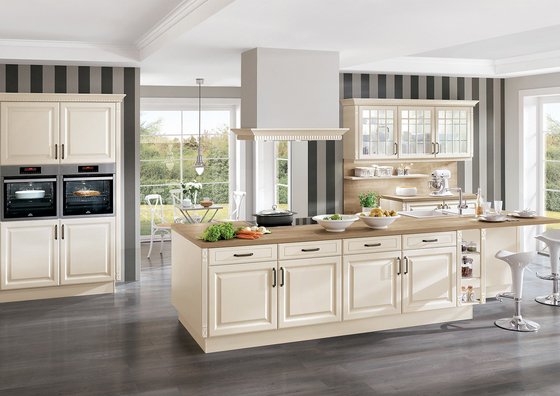
Around the central island: keep your distance
Positioned in the heart of the kitchen, the central island provides a rallying point for the whole family. This is where you cook, eat, chat and work... everyone gravitates around it. To ensure you can move around freely and easily open your cupboards, drawers and doors, you should ensure that you leave at least 80cm of free space around the island. A minimum of 120cm is also needed between the island and the rest of the room to allow you to open the dishwasher and the oven.
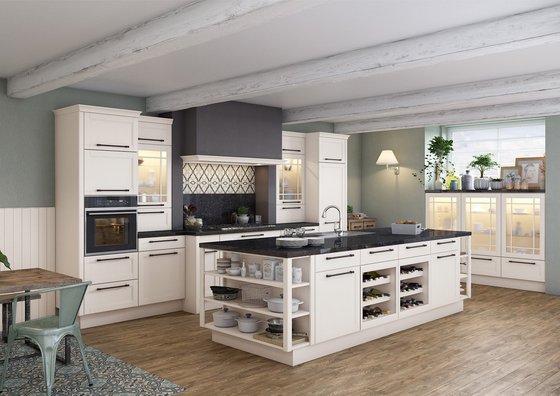
The right sized central island
The size of your island will depend on the size of your kitchen as well as its various items of equipment. It can measure 1m by 60cm if it simply serves as a dining table or 180cm by 120cm if it incorporates a hob as well as being able to seat four people for dinner. Its height can be between 85cm and 90cm. It all depends on the height of your family and whether or not you want bar stools. In any case, to avoid any domestic accidents, you will need to allow at least 40cm of work surface as clearance around the hob. If your central island also has a sink, it is advisable to place it at least 50cm from the hob or burner. Finally, don’t forget to allow a 30cm recess for your knees when sitting at the table.








![[Translate to English:] Cuisine fusion avec ilot central](/fileadmin/_processed_/1/5/csm_cuisine-FUSION-acier-brosse-216_c657b9fdd6.jpg)

